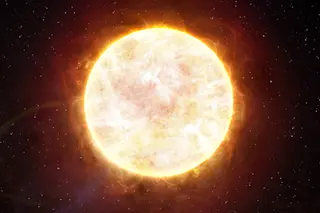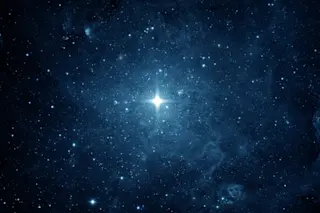I've never seen a green flash: the flare of green light that suddenly appears at the top of the Sun moments before sunset. Pictures on the web abound, but seeing it for yourself is a rare event. So I was astonished to see this amazing series of shots from photographer Gerhard Hüdepohl showing a green flash from the Moon!
That's pretty cool. This shot was taken on the Cerro Paranal mountain in Chile, where the European Southern Observatory keeps its 8-meter Very Large Telescope. Hüdepohl is one of several ESO Photo Ambassadors, people who take wonderful shots of the area and the night sky to help promote what ESO is doing. And this one qualifies! The Earth's atmosphere acts like a lens, bending light. Near the horizon this bending effect can be quite large, distorting objects when they rise or set (I explain this in detail in this post showing ...













